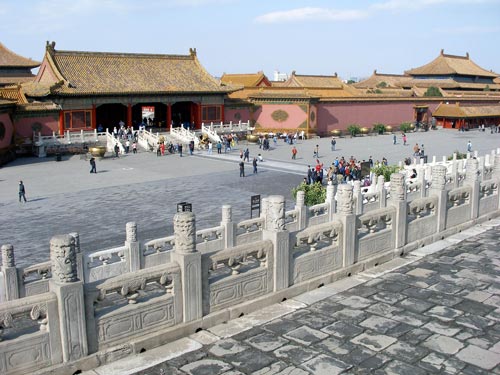
The gate, seen from the north side of the Hall of Preserved Harmony
During the Ming Dynasty, the emperor lived behind this gate in the Palace of Heavenly Purity. The large space was divided into nine rooms on two levels, with 27 beds. For security, the emperor would randomly choose a different bed each night. This continued through the early Qing Dynasty. But when the Yongzheng Emperor ascended to the throne, he did not wish to inhabit the palace occupied by his father for 60 years. Instead, he (and subsequent emperors) lived in the smaller Hall of Mental Cultivation to the west.
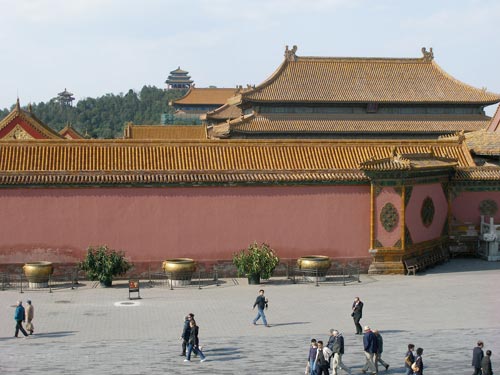
Large Stone Carving (Yunlongshidiao):
Located at the back of the Hall of Preserving Harmony, this is the largest stone carving in the palace... 55 feet long, 10 feet wide, almost 6 feet thick and weighs more than 200 tons. Also called the Marble Ramp Carved with Cloud and Dragon Design, it was carved in the early Ming Dynasty. In 1761, it was recarved since the old patterns had worn away.
The stone was quarried from Dashiwo, about, 40 miles southwest of Beijing, and the transportation required 20,000 people. In the winter, they poured water on the ground to make a road of ice, and in summer, they used rolling logs.
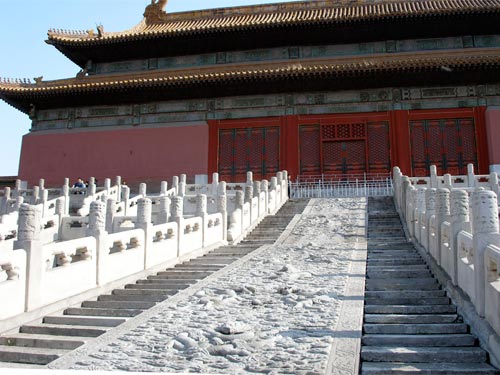
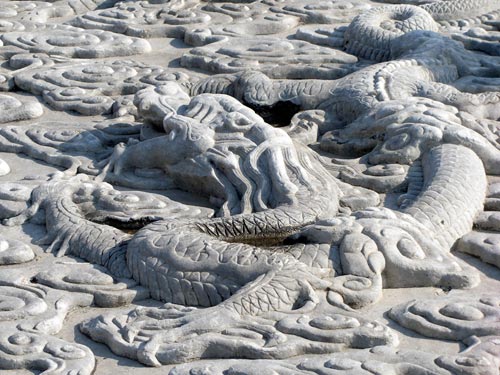
It is carved with designs of clouds and nine dragons. The dragon is the imperial sign.

The Hall of Preserved Harmony rests in the background.
The Imperial residence:

The various complexes were connected by long hallways.
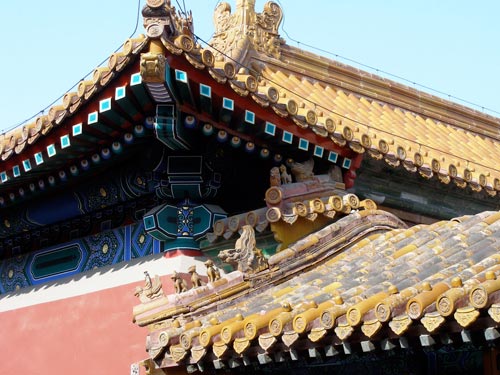
More imperial roof decorations

An imperial dragon
Yang Xin Dian (Hall of Mental Cultivation):
Starting from the reign of Emperor Yongzheng, this became one of the most important buildings in the palace. Constructed in 1537, the building is divided into two halls linked by covered corridors.

The main entrance
The main entrance is guarded by two bronze lions. Lions were supposed to be good doorkeepers because of their fearsome look. They were regarded by the ancient Chinese as divine animals, capable of warding off evil spirits.

The male lion is playing with a ball, which is said to represent the control of the whole universe by the emperor.
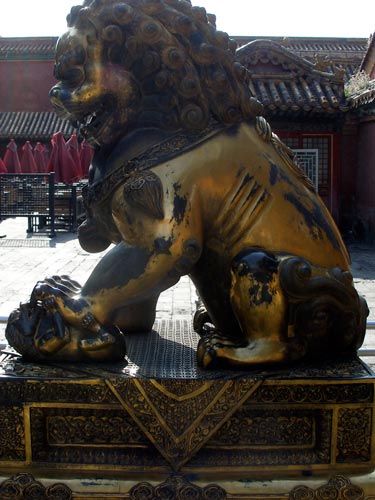
The female lion is playing with a cub, which symbolizes prosperity of the royal family's offspring.
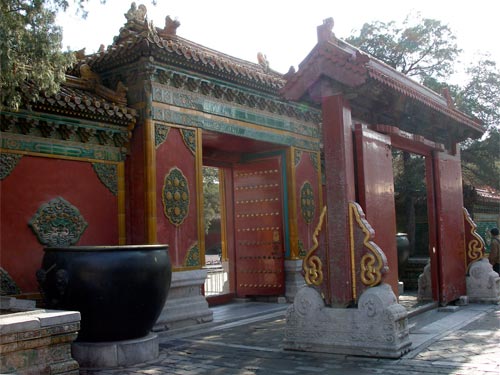
Inside of the main gate is another large fire-extinguisher cauldron.

The main hall of Hall of Mental Cultivation was used as the audience chamber, where the emperor read documents, granted audience to officials and summoned his ministers for consultation.

The Eastern Chamber (or Chamber of Warmth) has two thrones separated by a thin gauze curtain. Since women were only allowed ruled in the name of a man, behind this curtain is where the Empress Dowagers Cixi and Ci'an ruled.

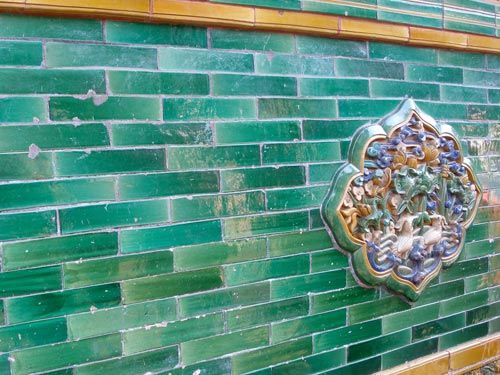
Colorful cermaic tiles

Ducks are often regarded as a symbol of fidelity.
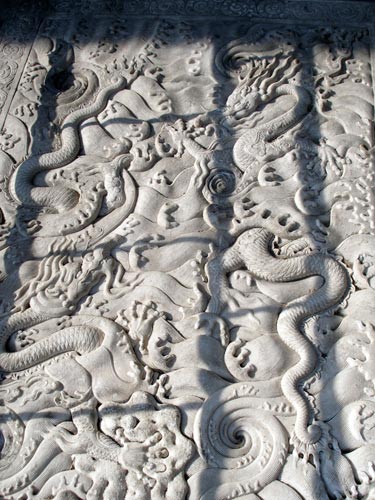
A dragon pavement
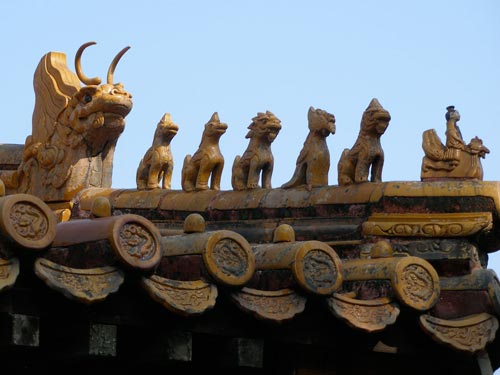
Imperial roof decorations

This building clearly wasn't very important, seeing as it has only one beast behind the man.
Ti Shun Tang (Hall of Consolation):
When the emperor lived in the Hall of Mental Cultivation, the empress lived in this hall. This building was constructed in the Ming Dynasty. Originally it was named Hall of Intensive Happiness and later Hall of Peacefull Walks. The words Ti Shun signify complying with whatever the emperor wanted.

A piece of crystal stone (far right) was placed in the courtyard to remind the empress to be honest and upright.
The relationship of a husband and wife was centred on its morality. Love was not seen as being important. It was even believed that if love existed, it should be concealed. Intimate behavior between a couple was frowned upon. Politeness and respect between the couple was recommended instead.
These are the various rooms of the empress. Other nearby rooms served as temporary residences for imperial concubines as well as waiting rooms for concubines and palace maids called upon to wait on the emperor.

Large wooden flaps could be lowered over the windows.
Glass windows first appeared during the early Qing Dynasty, during Emperor Yongzheng's reign (1723 - 1735). The glass was imported from West European countries, such as France, Italy and the Netherlands. At that time, it was very expensive so only the imperial palace could use it. Before that, paper or rice paper was used.
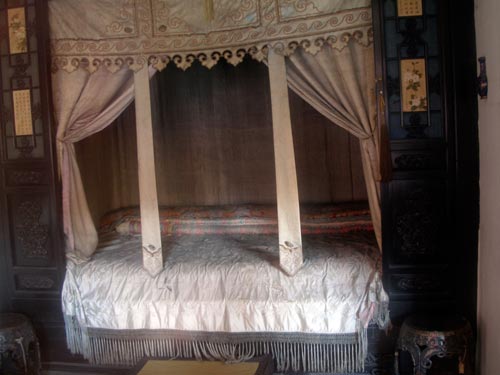
The bedroom of Empress Cixi

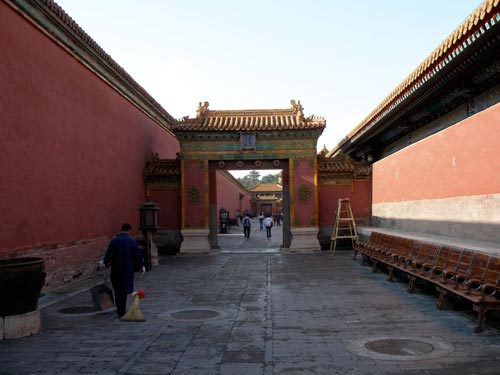
Continuing on through the palace maze

